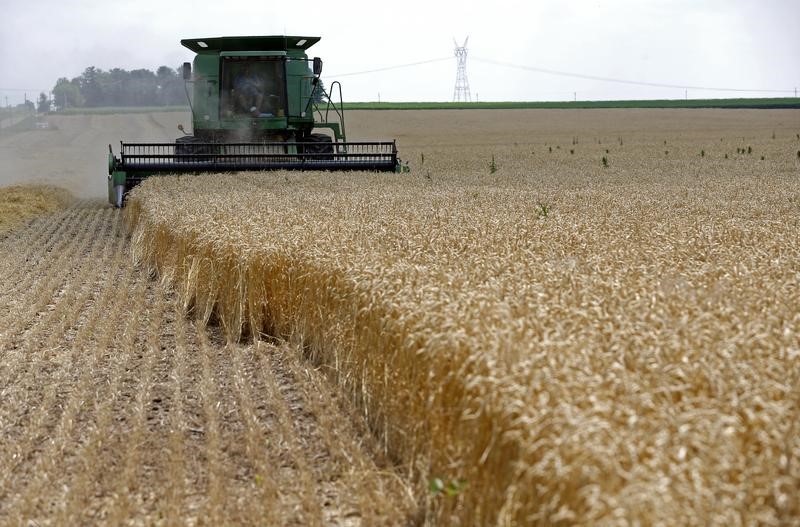By Lucia Mutikani
WASHINGTON (Reuters) - U.S. producer prices increased more than expected in February as the cost of services such as hotel accommodation pushed higher and the year-on-year gain was the largest in nearly five years, pointing to steadily rising inflation pressures.
Firming inflation, together with a tightening labor market, which is expected to generate strong wage growth, could allow the Federal Reserve to raise interest rates on Wednesday.
"Steadily rising inflation gives the Fed more reason to lift rates tomorrow," said Jennifer Lee, a senior economist at BMO Capital Markets in Toronto.
The Labor Department said on Tuesday that its producer price
index for final demand increased 0.3 percent last month after rising 0.6 percent in January. Economists polled by Reuters had forecast a 0.1 percent uptick.
In the 12 months through February, the PPI jumped 2.2 percent, the biggest advance since March 2012 and ahead of the 2.0 percent gain forecast in the Reuters poll. It followed a 1.6 percent increase in January.
The fairly strong producer inflation readings came as Fed officials gathered on Tuesday for a two-day policy meeting. The dollar was trading higher against a basket of currencies, while U.S. stocks were lower ahead of the Fed meeting. Prices for U.S. Treasuries rose.
Producer prices are rising as the prior weak readings, induced by cheap oil, drop out of the calculation. Crude oil prices have risen above $50 per barrel.
Also boosting price pressures are the dollar's 1.5 percent drop against the currencies of the United States' main trading partners since January and overall commodity price gains in tandem with a firming global economy.
CORE PPI RISING
A key gauge of underlying producer price pressures that excludes food, energy and trade services increased 0.3 percent in February, the biggest gain since April 2016. The so-called core PPI rose 0.2 percent in January.
Core PPI increased 1.8 percent in the 12 months through February after advancing 1.6 percent in January.
The Fed has a 2 percent inflation target and tracks a measure that is currently at 1.7 percent. The U.S. central bank is expected to raise its overnight benchmark interest rate by 25 basis points to a range of 0.75 percent and 1.00 percent on Wednesday. It increased borrowing costs last December and has projected three rate hikes in 2017.
In February, prices for final demand services increased 0.4
percent, accounting for more than 80 percent of the rise in the PPI. That was the biggest increase since June 2016 and followed a 0.3 percent gain in January.
The increase in the cost of services was driven by a 4.3 percent surge in hotel accommodation. There were also increases in the prices of chemicals, legal services, wholesale apparel and architectural and engineering services.
Healthcare costs rose 0.2 percent after a similar gain in January. Inpatient healthcare services increased 0.3 percent last month, while the cost of outpatient care rose 0.2 percent.
Those costs feed into the Fed's preferred inflation measure, the core personal consumption expenditures index. As a result of last month's increase, Morgan Stanley (NYSE:MS) economist Ted Wieseman said he expected a 0.16 percent gain in PCE medical services in February after an unchanged reading in January.
Medical services accounts for 19 percent of core PCE.
The cost of energy products increased 0.6 percent last month, slowing from January's 4.7 percent surge. Wholesale food prices increased 0.3 percent after being unchanged in January.

"Inflation pressures are continuing to build in the U.S. economy," said Rob Martin, an economist at Barclays (LON:BARC) in New York. "With labor markets continuing to tighten, and the dollar and commodity prices broadly stable, we see inflation firming this year and next."
